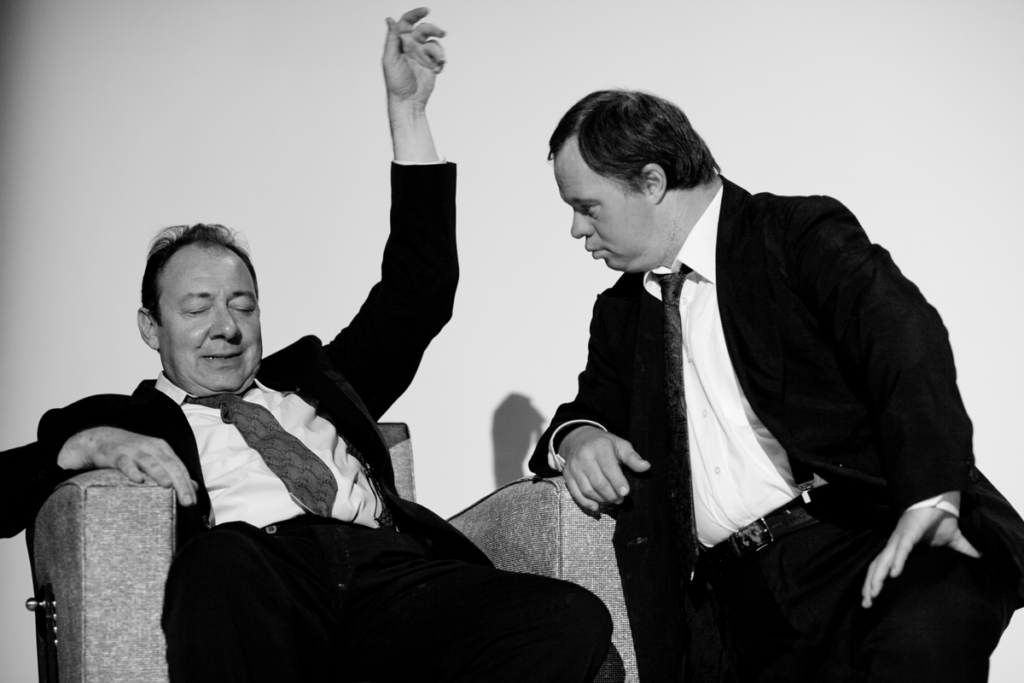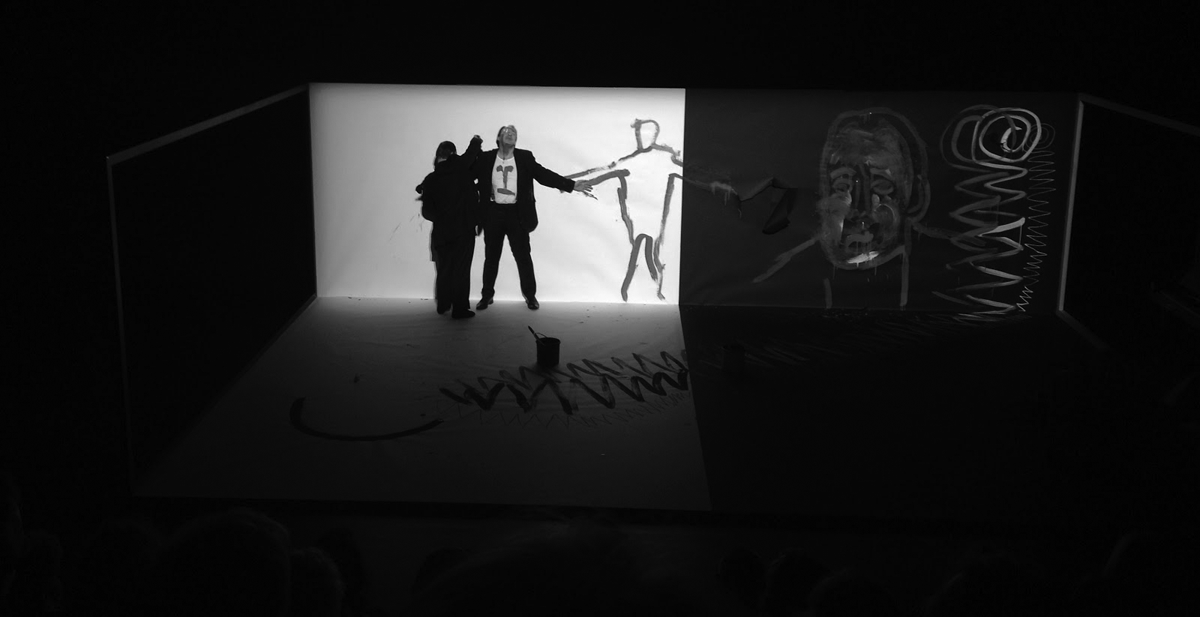
11_2012
+++++++++++++++++++++++++++++++++++++++++++++++++++
This beautiful piece directed by Roland Auzet is a commission of the Théâtre de la Renaissance, Théâtre Vidy–Lausanne, Act Opus and Centre Dramatique National d’Aubervilliers.
Hervé Pierre – actor
Pascal Duquenne – actor
Christophe Tarkos – texts
Roland Auzet – direction
Julien Avril – dramaturgy
Olivier Pasquet – electronic music
Arié Van Egmond – video
Goury – stage design
Bernard Revel – light
Tu Tiens sur tous les Fronts was premiered in November 2012. It is composed of several texts from the poet Christophe Tarkos. This consists of the deconstruction of text form while keeping its meaning thanks to underlying significance. His poetry is often politically orientated [1].
The piece consists of a juxtaposition of two opposite characters. One is Hervé Pierre from La Comédie Française and the second one is cinema actor Pascal Duquenne who is very well dealing with down syndrome. In the piece, one character speaks a lot and the other one only says one word at the end and nothing else. Another juxtaposition can be seen with the stage design which the left side is white and the right side black. This stage is made of paper and is torn apart at the end of the show. Also, Pascal Duquenne expresses himself with red and black paint. This perfectly fits with the Collection of Outsider Art (Art Brut) which Jean Dubuffet and André Breton, among others, initiated in Lausanne.

drawings on minimalist stage made of paper (the piano is located on the right)
The music also consists of the association of two worlds. A disklavier creates an acoustic universe and electronic sounds elaborate elements from both recorded piano and pure synthesis. A link between those worlds is made with spatialization and resonators. In a similar way Gérard Grisey linked instruments together in the same space in Prologue. The piano has a hidden contact microphone that sends resonances from the harmony table to various resonators. If exaggerated, this could sometimes sound like underwater or frozen spaces. If used in a subtle way, this would sound like a peculiar reverb with sometimes long thin sine cues. The music also consists of a juxtaposition of two worlds. The Disklavier creates an acoustic universe and electronic sounds elaborate elements from both recorded piano and pure synthesis [2]. A link between those worlds is made with spatialization and resonators. The piano has a hidden contact microphone that sends resonances from the harmony table to various resonators. If exaggerated, this could sometimes sound like underwater or frozen spaces. If used subtly, this would sound like a peculiar reverb with sometimes long thin sine trails.
The mechanical piano plays simple evolution and metric changes similarly as Seth Horvitz [3] Conlon Nancarrow [4] or Mark Fell (in a less electronic way).
Further reading (not citations):